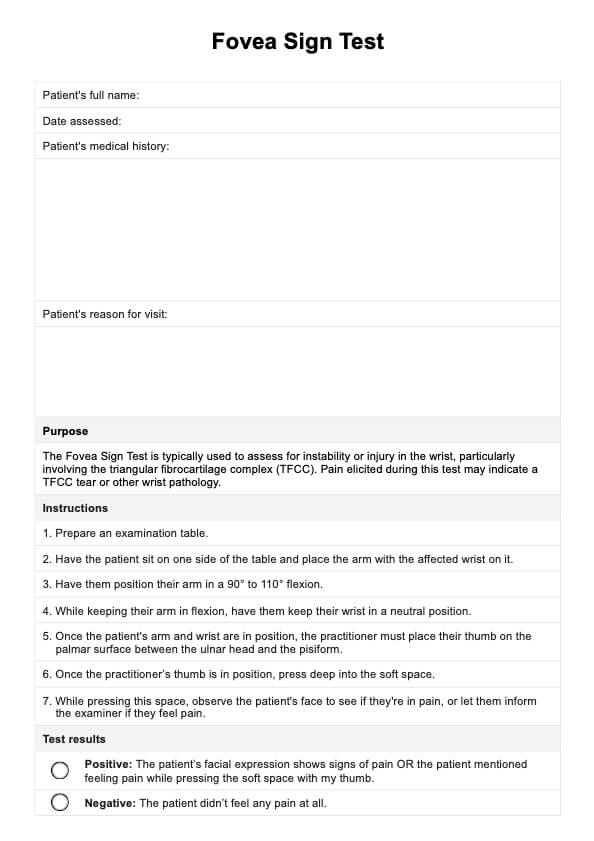No. It's a screening test included in the diagnostic process. It shouldn't be the sole assessment used to make an official diagnosis.

Fovea Sign Test
Conduct the Fovea Sign Test to determine the possible cause of ulnar wrist pain in patients.
Use Template
Fovea Sign Test Template
Commonly asked questions
Yes. It's designed to elicit pain that's already there, and professionals conducting it should be careful not to exacerbate the pain.
EHR and practice management software
Get started for free
*No credit card required
Free
$0/usd
Unlimited clients
Telehealth
1GB of storage
Client portal text
Automated billing and online payments











